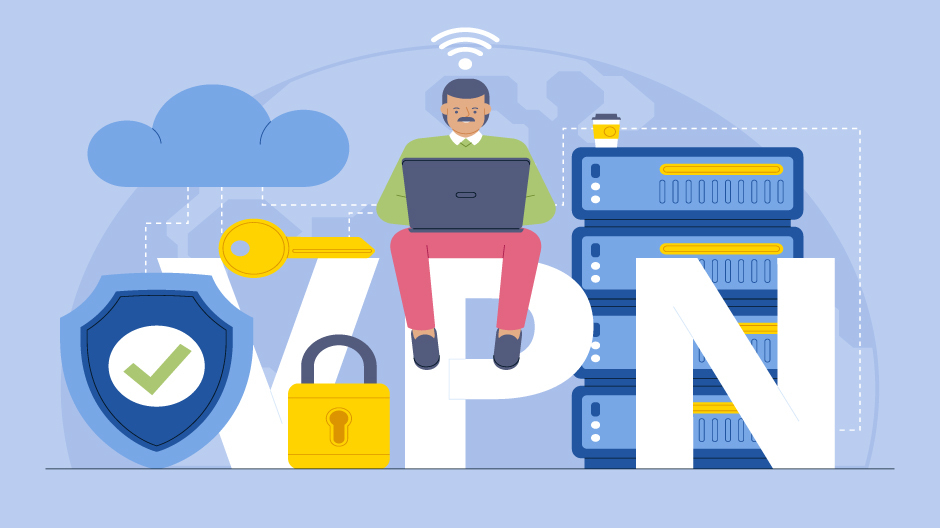A Virtual Private Server (VPS) offers a powerful, flexible solution for businesses, developers, and entrepreneurs who require greater control, performance, and security compared to shared hosting environments. A VPS provides dedicated resources such as CPU, RAM, and storage, allowing users to deploy applications, host websites, run databases, and perform custom configurations without the limitations typically found in shared platforms. Whether you’re launching a new project, scaling an existing application, building a SaaS product, or optimizing your online presence for better speed and reliability, understanding how to secure, manage, and optimize your VPS is crucial for success.

Choosing the right VPS hosting provider can significantly impact the overall performance and cost-effectiveness of your operations. There are many options available, ranging from best managed VPS hosting services—ideal for users who prefer a hands-off approach with professional support for updates, security patches, and monitoring—to low-cost VPS hosting solutions that offer budget-friendly plans for startups, developers, and small businesses willing to manage their own servers. Each choice has its own set of trade-offs between price, ease of use, scalability, and security.
This comprehensive guide will walk you through the essentials of VPS hosting, focusing on critical areas such as selecting the best VPS hosting provider, understanding the differences between managed and unmanaged services, implementing robust server security practices like firewall configurations, regular backups, and software updates, and optimizing server performance for maximum efficiency. Whether you’re aiming for cost savings, top-tier security, or seamless scalability, the knowledge and strategies shared here will empower you to make informed decisions and maintain a high-performing, secure VPS environment.
Understanding VPS Hosting-
A Virtual Private Server (VPS) is a virtualized server that mimics a dedicated server within a shared hosting environment. It provides users with dedicated resources, including CPU, RAM, and storage, offering greater control and customization compared to shared hosting.
Benefits of VPS Hosting:
- Performance: Dedicated resources ensure consistent performance, even during traffic spikes.
- Customization: Full root access allows for tailored configurations to meet specific needs.
- Scalability: Easily upgrade resources as your website or application grows.
- Security: Isolated environments reduce the risk of security breaches from neighboring accounts.
Choosing the Right VPS Hosting: Managed vs. Unmanaged-
When selecting an affordable VPS hosting plan, one of the primary decisions is choosing between managed and unmanaged services.
Managed VPS Hosting:
Managed VPS hosting is ideal for users who prefer to focus on their business or development without worrying about server maintenance. The hosting provider handles tasks such as server setup, updates, security patches, and monitoring.
Unmanaged VPS Hosting:
Unmanaged VPS hosting is suited for users with technical expertise who prefer full control over their server environment. Users are responsible for server setup, maintenance, and security.
Securing Your VPS-
Security is one of the most critical aspects of managing a Virtual Private Server (VPS), especially if you’re using unmanaged or cheap VPS hosting where you have full control over the environment. While the flexibility of VPS hosting is a major advantage, it also means you’re responsible for keeping the server secure. Whether you’ve chosen a cheap managed VPS hosting plan or are handling everything yourself, implementing strong security measures is essential for protecting your data, applications, and reputation.
The first and most fundamental step is keeping your server up to date. Regular updates to the operating system and installed software help patch known vulnerabilities before they can be exploited. Many attacks target outdated software, so enabling automatic updates or setting a regular schedule to manually update packages is crucial.
Next, configure a firewall to control all incoming and outgoing network traffic. A firewall helps limit access to only the services and ports you need, minimizing exposure to potential attacks. Tools like UFW (Uncomplicated Firewall) on Ubuntu or firewalld on CentOS make this process straightforward, while more advanced users may opt for iptables or CSF (ConfigServer Security & Firewall) for deeper control.
Another important measure is replacing password-based logins with SSH key authentication. SSH keys are much more secure than passwords and significantly reduce the risk of brute-force attacks. You should also disable root login via SSH and change the default SSH port from 22 to a non-standard one to further reduce attack vectors.
Installing tools like Fail2Ban can add another layer of automated security. Fail2Ban monitors your server logs for patterns that indicate malicious behavior—such as repeated failed login attempts—and bans offending IPs temporarily or permanently. This simple tool is highly effective in protecting against brute-force attacks and is especially useful for servers that are exposed to the public internet.
Regular backups are another critical component of VPS security. Backups ensure that your data can be restored in case of a hardware failure, data corruption, or security breach. You should set up automated daily or weekly backups and store them in a remote or cloud location. Additionally, periodically test your backups to confirm they’re working and restorable.
To protect against Distributed Denial of Service (DDoS) attacks, choose a hosting provider that offers built-in DDoS mitigation—many of the best managed VPS hosting providers include this by default. Alternatively, use services like Cloudflare or Sucuri, which act as a protective layer to filter malicious traffic before it reaches your server. Rate limiting and traffic analysis tools can also help you monitor and block abnormal usage patterns.
Malware scanning is another vital layer of defense. Tools such as ClamAV, Maldet, and rkhunter can help detect and remove malware or rootkits from your system. These should be set to run regularly, especially on servers that host websites or receive file uploads from users. Combined with antivirus software, these tools can catch threats early before they spread.
Disabling unused services and ports is an often overlooked but simple step in reducing your attack surface. Any unnecessary open port or background service could be a potential entry point for attackers. Use commands like netstat or ss to check which services are running, and shut down anything that isn’t essential to your setup.
Adding a Web Application Firewall (WAF) can further protect web-facing applications from common attacks like SQL injection and cross-site scripting (XSS). WAFs such as ModSecurity can be installed at the server level, or you can opt for cloud-based WAFs like those offered by Cloudflare or AWS, which offer scalability and ease of use for both small businesses and enterprises.
Monitoring server logs is essential for gaining visibility into your server’s health and security. Logs can reveal failed login attempts, suspicious user activity, and potential vulnerabilities. Regularly check logs located in /var/log/ and consider using centralized logging tools like Logwatch or GoAccess to simplify the process and generate actionable reports.
Implementing Two-Factor Authentication (2FA) adds another critical layer of protection. Whether it’s for your server’s control panel, admin dashboards, or SSH login, 2FA ensures that even if your credentials are compromised, unauthorized access is still blocked. Tools like Google Authenticator, Duo, and Authy make it easy to set up 2FA on most systems.
Lastly, you should harden your web server and PHP configurations. Disable unnecessary PHP functions like exec(), shell_exec(), and system() that could be exploited. Set secure file and directory permissions, and always use HTTPS by default with a valid SSL certificate—Let’s Encrypt provides free certificates and is easy to install on most servers.
Altogether, these practices create a multi-layered defense that can significantly reduce the chances of a successful cyberattack. Whether you’re using a cheap, low-cost, or best managed VPS hosting service, applying these security measures ensures your server is not just functional—but also safe, stable, and trustworthy.
Optimizing Your VPS for Performance-
Optimizing your VPS ensures that your applications run smoothly and efficiently, providing a better experience for your users.
Performance Optimization Tips:
- Resource Monitoring: Regularly monitor CPU, RAM, and disk usage to identify and address bottlenecks.
- Web Server Optimization: Configure your web server for optimal performance, including enabling caching and compression.
- Database Tuning: Optimize your database settings and queries to reduce load times.
- Content Delivery Network (CDN): Implement a CDN to distribute content globally, reducing latency.
- Load Balancing: Distribute traffic across multiple servers to prevent overload and ensure high availability.
Budget-Friendly VPS Hosting Options-
For those seeking cheap VPS hosting without compromising on quality, several hosting providers offer competitive plans.
Affordable VPS Hosting Providers:
- M2Host: M2Host offers VPS plans starting at $9.99 per month, featuring RAM, SSD storage, free SSL, and unmetered bandwidth.
- A2 Hosting: Known for impressive speed and reliable customer support.
- IONOS: Offers features like DDoS protection and regular backups.
Conclusion-
Securing and optimizing your Virtual Private Server is essential for maintaining a reliable and efficient online presence. By understanding the differences between managed and unmanaged VPS hosting, implementing robust security measures, and optimizing for performance, you can ensure that your server meets your specific needs. Whether you’re looking for the best managed VPS hosting, low-cost solutions, or a secure and cheap hosting environment, the hosting providers and strategies outlined in this guide will help you make informed decisions and achieve your goals.



